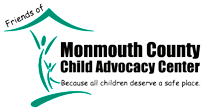What are the Benefits of a CAC?
The main benefit of a CAC is that with the multidisciplinary team (MDT) approach children heal from abuse while holding offenders accountable. A child advocacy center provides intervention services to prevent abuse and keep children safe. While the multidisciplinary team contributes to effective investigation, disposition and treatment of child abuse. Two important goals of the MDT are to reduce the number of interviews of a child regarding abuse and to insure prompt delivery of necessary services.
 Children currently find the necessary services at the Monmouth County Child Advocacy Center (MCCAC).
Children currently find the necessary services at the Monmouth County Child Advocacy Center (MCCAC).
The multidisciplinary team approach is used to provide the necessary support and for ongoing medical and mental health treatment services. The added support enables the MCCAC to fully assist Monmouth County’s most vulnerable children.
There are economic benefits to having the MCCAC as well. Cases served by a full multidisciplinary team are 36% less costly than non-CAC cases. The cost per case per 1,000 children is approximately 41% lower in CAC communities.
Who Makes Up the Multidisciplinary Team?
The core group of disciplines that make up an (MDT): Law enforcement, Child Protective Services (DCP&P), prosecution, medical, mental health professionals, and victim advocates.
 Through this approach, facts about the case are gathered efficiently, team members can share information, and thus communication is improved. The MDT approach improves timely evidence gathering, and with the prosecutor involved early on in cases, more successful prosecution outcomes are realized.
Through this approach, facts about the case are gathered efficiently, team members can share information, and thus communication is improved. The MDT approach improves timely evidence gathering, and with the prosecutor involved early on in cases, more successful prosecution outcomes are realized.
For the children and their families the collaboration encourages coordinated intervention, reducing additional trauma for the innocent victims while improving services.
Why Invest in CACs?
CACs prevent abuse and keep children safe. Last year, CACs provided child sexual abuse prevention education to more than 500,000 individuals, many in school settings.
CACs save money. Their service delivery model saves court, child protection, and investigative dollars averaging $1,000 per child abuse case compared to non-CAC communities.
CACs are efficient. Providing significantly higher rates of coordinated investigations; 81 % of investigations in CACs were coordinated between law enforcement and child protective services, compared with 52% in comparison communities.
CACs hold offenders accountable. Increased usage of CACs and multidisciplinary teams has resulted in increased successful prosecutions of child abuse perpetrators. One study shows an average 94% conviction rate for CAC cases carried forward.
CACs help child victims heal. Child victims of sexual abuse who receive services at CACs are four times more likely to receive forensic medical exams7 and increased referrals for mental health treatment8 than children served by non-CAC communities.
CACs are effective. Research demonstrates caregivers in CAC cases are more satisfied with the investigation than those from non-CAC comparison sites. 97% of parents would tell others to seek help at the CAC.
CACs are committed to research-supported practice. Last year, National Children’s Alliance and its CAC members provided training to 46,608 child abuse professionals, ensuring sound investigations and compassionate treatment of victims nationwide.
CACs are accountable. Accreditation of CACs through National Children’s Alliance assures the highest standard of care is provided to victims.
“If we don’t stand up for children, then we don’t stand for much.”
– Marian Wright Edelman
Source: National Children’s Alliance, www.nationalchildrensalliance.org
